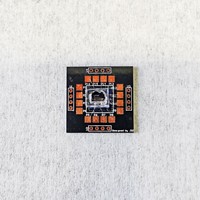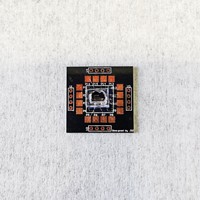Advertisement
Grab your lab coat. Let's get started
Welcome!
Welcome!
Create an account below to get 6 C&EN articles per month, receive newsletters and more - all free.
It seems this is your first time logging in online. Please enter the following information to continue.
As an ACS member you automatically get access to this site. All we need is few more details to create your reading experience.
Not you? Sign in with a different account.
Not you? Sign in with a different account.
ERROR 1
ERROR 1
ERROR 2
ERROR 2
ERROR 2
ERROR 2
ERROR 2
Password and Confirm password must match.
If you have an ACS member number, please enter it here so we can link this account to your membership. (optional)
ERROR 2
ACS values your privacy. By submitting your information, you are gaining access to C&EN and subscribing to our weekly newsletter. We use the information you provide to make your reading experience better, and we will never sell your data to third party members.
Diagnostics
Paper strip detects SARS-CoV-2 variants
Foldable assay could help track different COVID-19 mutants for low-cost surveillance
by Mark Peplow, special to C&EN
July 19, 2022

A diagnostic test that relies on a strip of filter paper and some cunning origami can quickly distinguish between different variants of SARS-CoV-2 (Nat. Biomed. Eng. 2022, DOI: 10.1038/s41551-022-00907-0).
The proof of concept assay needs more validation with clinical samples before being ready for routine use. But the tests could cost as little as $0.30 each and require no special equipment, making them potentially useful in areas of the world with limited biomedical facilities, says Ruijie Deng of Sichuan University, part of the team behind the assay.

Each SARS-CoV-2 variant carries characteristic mutations in its RNA; some mutations are shared by several variants. Variants are sometimes better at evading our immune defenses or are more transmissible than the original strain that emerged in late 2019. Identifying the prevalence of different variants helps public health agencies to adapt their responses to the COVID-19 pandemic, and it can also help to guide the treatment of individual patients.
Reverse transcription quantitative polymerase chain reaction (RT-qPCR), which is used for COVID-19 diagnosis, can sometimes flag known variants in a sample, but researchers have to sequence a variant’s genome to verify its identity. Both methods rely on time-consuming nucleic acid amplification and expensive equipment.
In contrast, the assay developed by Deng and his colleagues requires no nucleic acid amplification, takes just 30 min to complete, and uses reagents that are preloaded onto a paper strip. During the assay, the strip is folded several times, with each fold bringing the sample mixture in contact with the next set of reagents—an origami approach that has been used in previous paper-based tests.
To run the assay, the researchers add a sample to a grid of spots at one end of the strip and fold it onto a matching set of spots that can recognize nine different SARS-CoV-2 mutations. These test spots contain double-stranded DNA carrying a silver ion, and each spot’s DNA has a slightly different sequence, carefully designed so that viral RNA with a specific known mutation can bind to it and release the silver ion.
Freed silver ions then meet another set of spots containing urease, an enzyme that converts urea to ammonium and is inhibited by silver. One more fold, and the urease mixes with urea and an indicator that turns from red to yellow in the presence of ammonium. Any spots that remain red show that the urease is inhibited, indicating that a particular RNA mutation was present in the sample. The researchers use a smartphone to record the pattern of red and yellow spots at the end of strip, revealing which variants were in the sample.
This chain of reactions is an interesting way to amplify the signals from just a few viral particles, says Marya Lieberman at the University of Notre Dame, who develops paper analytical devices. “To be able to get a visible signal out of that is just amazing,” she says.
Using mutated RNA prepared in the lab, the researchers found that the test could identify SARS-CoV-2 variants, including Alpha, Beta, Gamma, and Delta. The assay could be adapted to detect variants of other viruses, such as influenza, and it detected the presence of SARS-CoV-2 in 50 clinical samples collected in mid-2020, before any of the big-name variants had evolved. The researchers are now keen to trial their assay against clinical samples containing more recent variants, such as the Omicron strains.
Although Lieberman thinks the assay might be too tricky for patients to use at home, “I could see this being applied in a remote lab for surveillance,” she says. But the test would have to be relatively straightforward to manufacture, the reagents on the paper strip should be stable for long periods of time, and it must provide reliable results in the field. “All these aspects of the chemistry have to be tested from a practical engineering viewpoint,” Lieberman says.





Join the conversation
Contact the reporter
Submit a Letter to the Editor for publication
Engage with us on Twitter